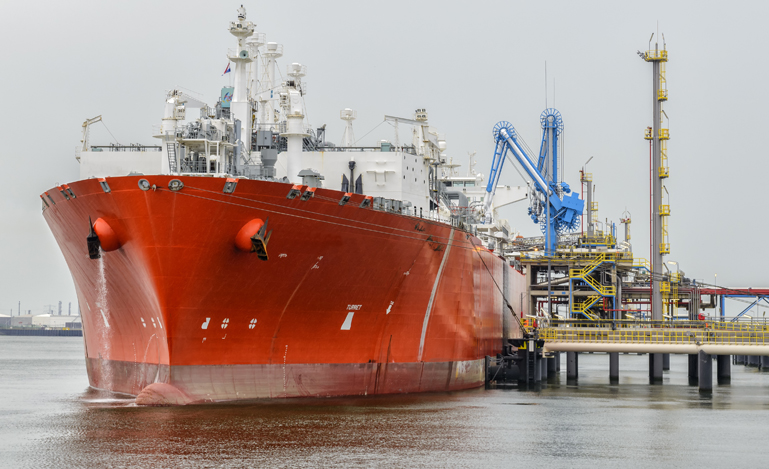LNG projects: Slow but not dead
To bring the resource to market, project proponents must first have meaningful interactions with First Nations. That means recognizing that distinct legal systems are at work.

In 2013, the BC Liberals’ pledged to wipe out the province’s debt by building liquid natural gas terminals worth $100 billion to the province — a bit of a pipe dream, as it turned out, notes Robin Junger of McMillan LLP. LNG may not be developing in B.C. quite as Christy Clark intended; nevertheless, Junger insists, “Reports of its death are greatly exaggerated.”
That was the takeaway from a panel at the CBA Environmental, Energy and Resources Law Summit held in Vancouver earlier this month on Canada’s experience in trying to bring LNG resources to market.
As quickly became evident—on this panel and others—key factors to be taken into account by proponents and their teams as they look to secure locations for LNG extraction, are the environmental implications and the interests and rights of First Nations.
Brad Wylynko of Perth’s Clayton UTZ was on hand to bring an Australian perspective to the discussion. He noted that his country is aiming to take over from Qatar as the number one exporter of LNG in the world. He presented case studies from Western Australia including that of Chevron’s Gorgon gas project, one of the world’s largest single LNG producers, built on Barrow Island, a national park with unique flora and fauna. The Environmental Protection Agency initially rejected the proposal due to risks to the breeding grounds of flatback turtles, but the state government overruled them, Wylynko said, adding that Chevron offered to spend 60 million Australian dollars on protective measures.
Construction presented several challenges, he said, not least because Chevron had to ensure that no rats, cats, or any other non-native creature, would be inadvertently introduced to the island. “The supply ships had to be quarantined. You had these massive pieces of machinery all sealed up with plastic wrap.”
George Burke of Vancouver firm Burke, Dos Remedious, spoke about the situation in Northern B.C., concentrating on the unsuccessful Petronas project to build an LNG facility on Lelu Island with an investment of $36bn.
The situation was problematic from the beginning, he said, noting that the Malaysian company walked into negotiations with local First Nations and others in November 2012, said they were there to listen, but added that they expected to have a final investment decision by the end of 2013. From discussions with then Premier Clark and Prime Minister Stephen Harper, Petronas had, Burke said, “understood they had social license.”
Those in the room—including members of the Gitxsan First Nation and representatives from DFO—were stunned, pointing out, among other concerns, that the proposed facility would be at the mouth of the Skeena River, a vital salmon habitat. “Somebody asked if it were possible to find a worse spot anywhere on the coast of B.C. to put an LNG terminal,” Burke recalled.
Protests against the facility culminated in the occupation of Lelu Island, and the withdrawal of Petronas but not before, Burke noted, it caused bad blood and rekindled internal fights over territory between bands.
“You can get the law and the technical process right,” he said, “but the reality is you must explore fully the context, and truly understand the nature of consensus, or you will get nowhere.”
This point was picked up and developed in a following session on Indigenous partnerships, by Sunny LeBourdais, director of operations of the Qwelminte-Secwepemc G2G in Kamloops, B.C. She said that for meaningful and productive interactions between proponents and First Nations to take place, there must be respectful recognition that there are two distinct legal systems at work. “You must recognize our government and ancestral knowledge,” she said. “It is not about just ‘Indigenizing’ something.”
Giving examples from different tellings (ancient stories), LeBourdais demonstrated how they give clear guidance and insight around decision-making and land management for the nation, similar to western legal precedent. This oral tradition must be respected, she said, in any negotiation and those coming into the nation with proposals should do so “humbly” as befits a visitor on someone else’s land.
Discussing the 2007 United Nations Declaration on Indigenous Peoples Rights (UNDRIP), Gib van Ert, of Toronto’s Miller Thomson LLP, said the implications for Canadian law remained uncertain, despite the Liberal government in 2016 formally removing its predecessor’s objection to adopting it. The BC NDP government, he noted, has also said it will implement UNDRIP.
There are several issues to consider, he suggested, including the fact that in Canada, the Crown is not a source of law, and a change in the law requires a constitutional amendment. Complications may also arise where UNDRIP overlaps with existing treaty decisions that may remove rights already established that First Nations want to keep. Although many Canadian courts have considered UNDRIP, there is, he said, yet to be any leading statement from an appellate court.
There was no knowing whether Bill C-262—currently before parliament to ensure that the laws of Canada are in harmony with UNDRIP— will become law, van Ert said, noting that the outcome of October’s federal election could stall things further. “I think we will see a drip, drip, drip approach in the courts,” he said. “And I expect you will see Indigenous Peoples themselves being quite impatient about the lack of progress.”


